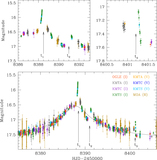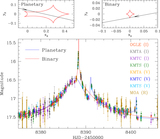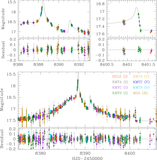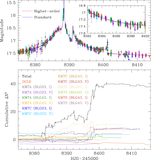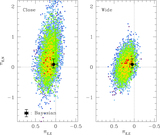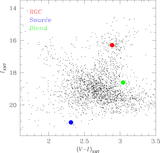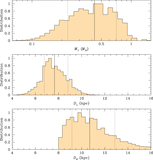Image Details
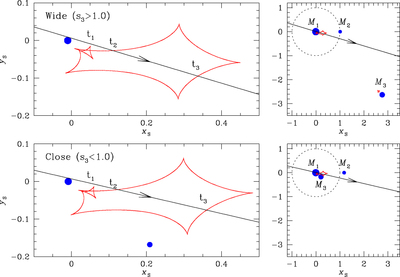
Caption: Figure 4.
Lens system configurations of the 3L1S solutions. The upper and lower panels are for the wide (s3 > 1.0) and close (s3 < 1.0) solutions, respectively. For each solution, the left panel shows the central magnification region, while the right panel shows the whole view including the locations of all lens components, marked by M1, M2, and M3. The positions on the source trajectory marked by t1, t2, and t3 represent the source locations at the times of the three peaks in the lensing light curve marked in Figure 1. The dotted circle in each of the right panels represents the Einstein ring.
Copyright and Terms & Conditions
© 2020. The American Astronomical Society. All rights reserved.


